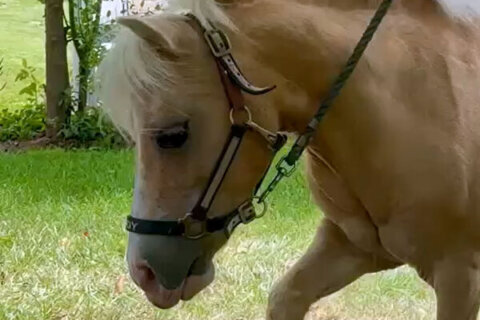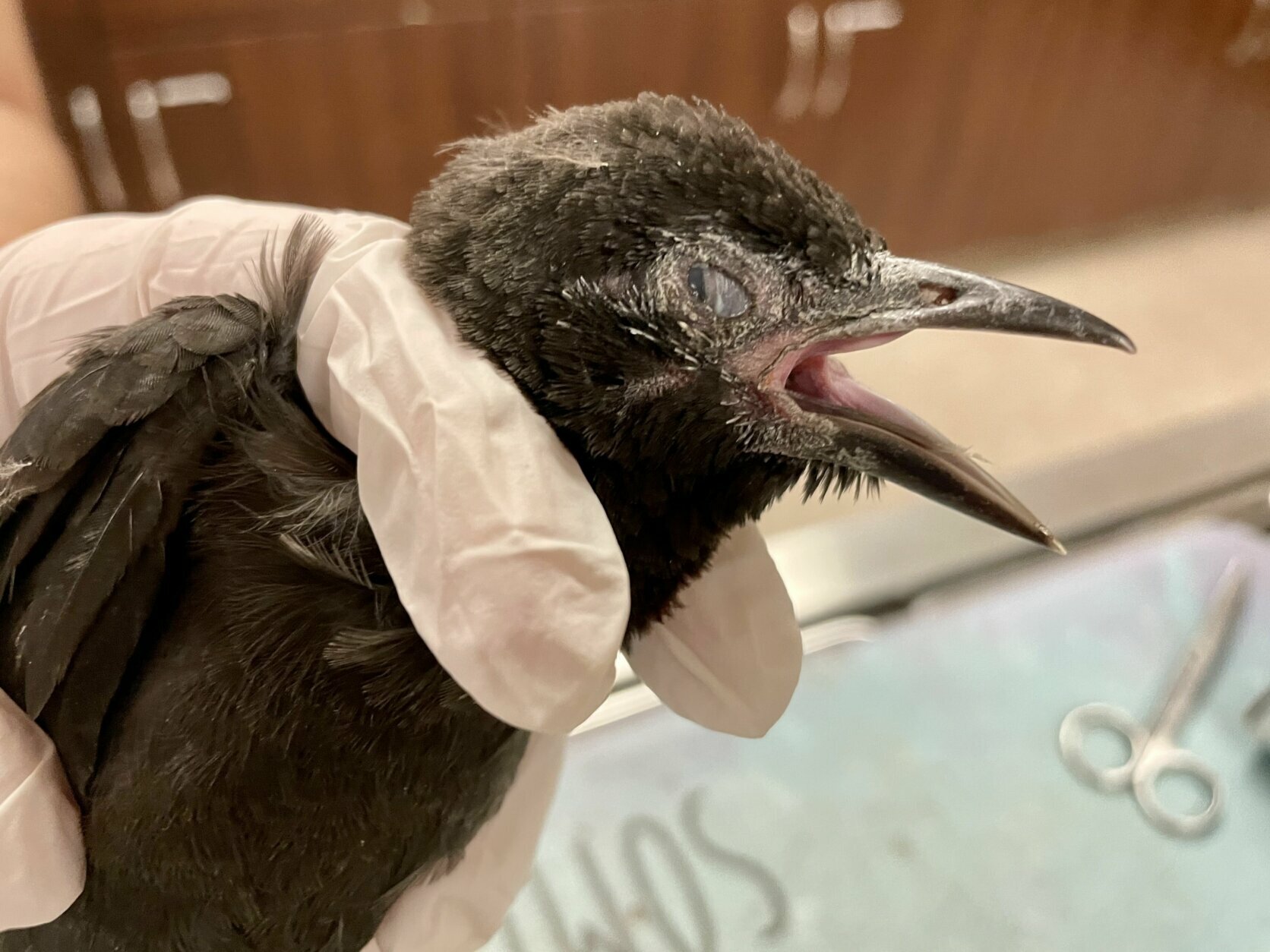
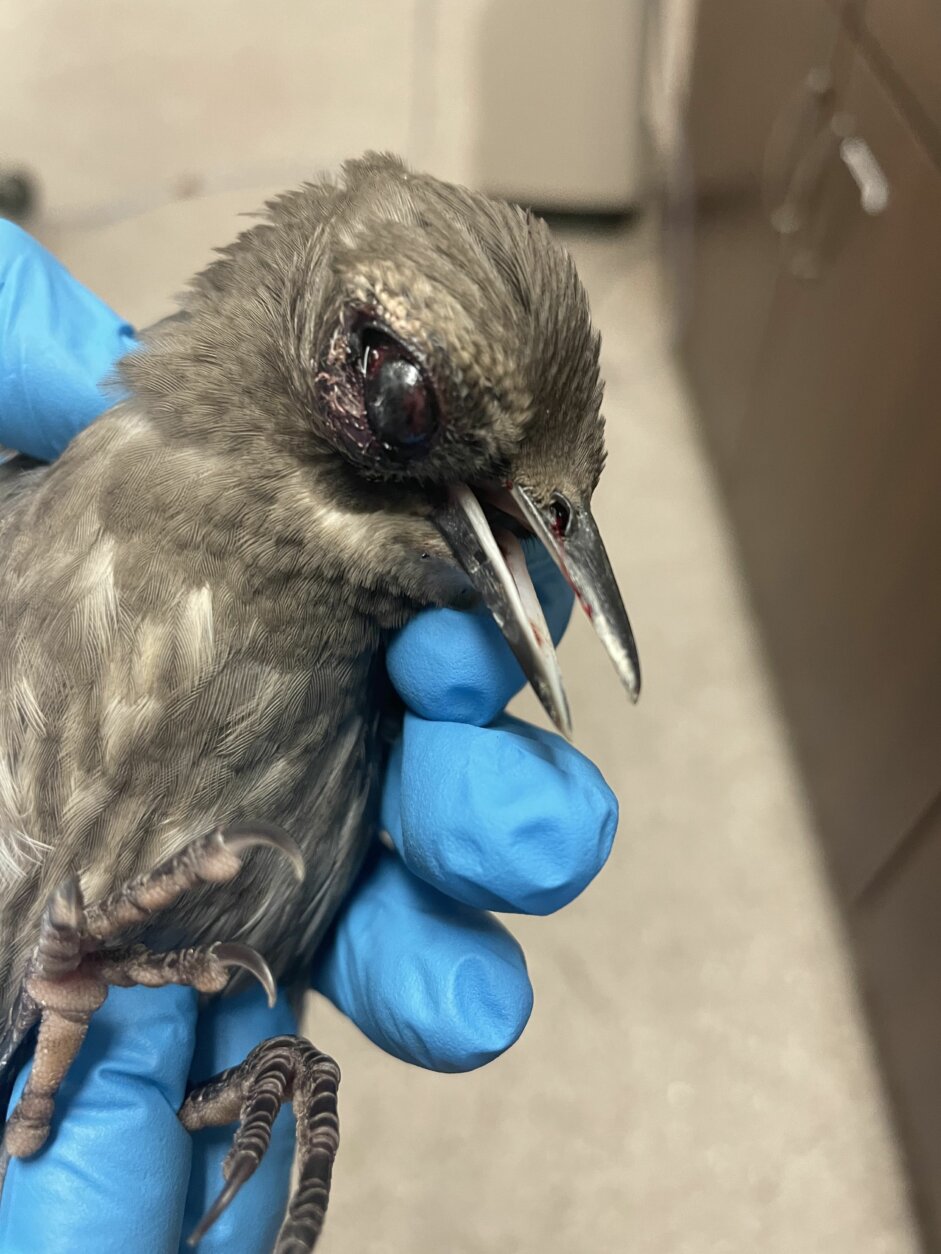
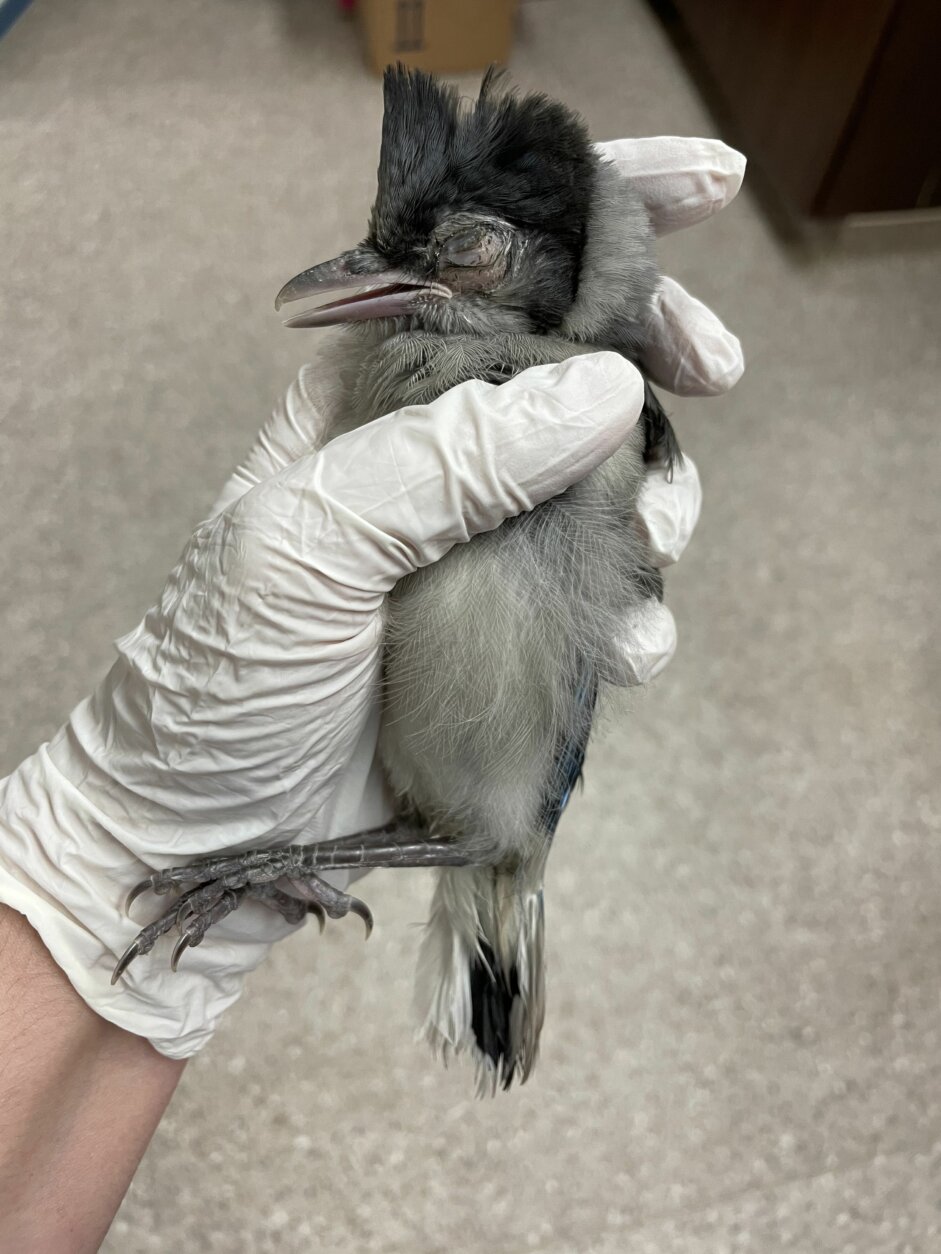
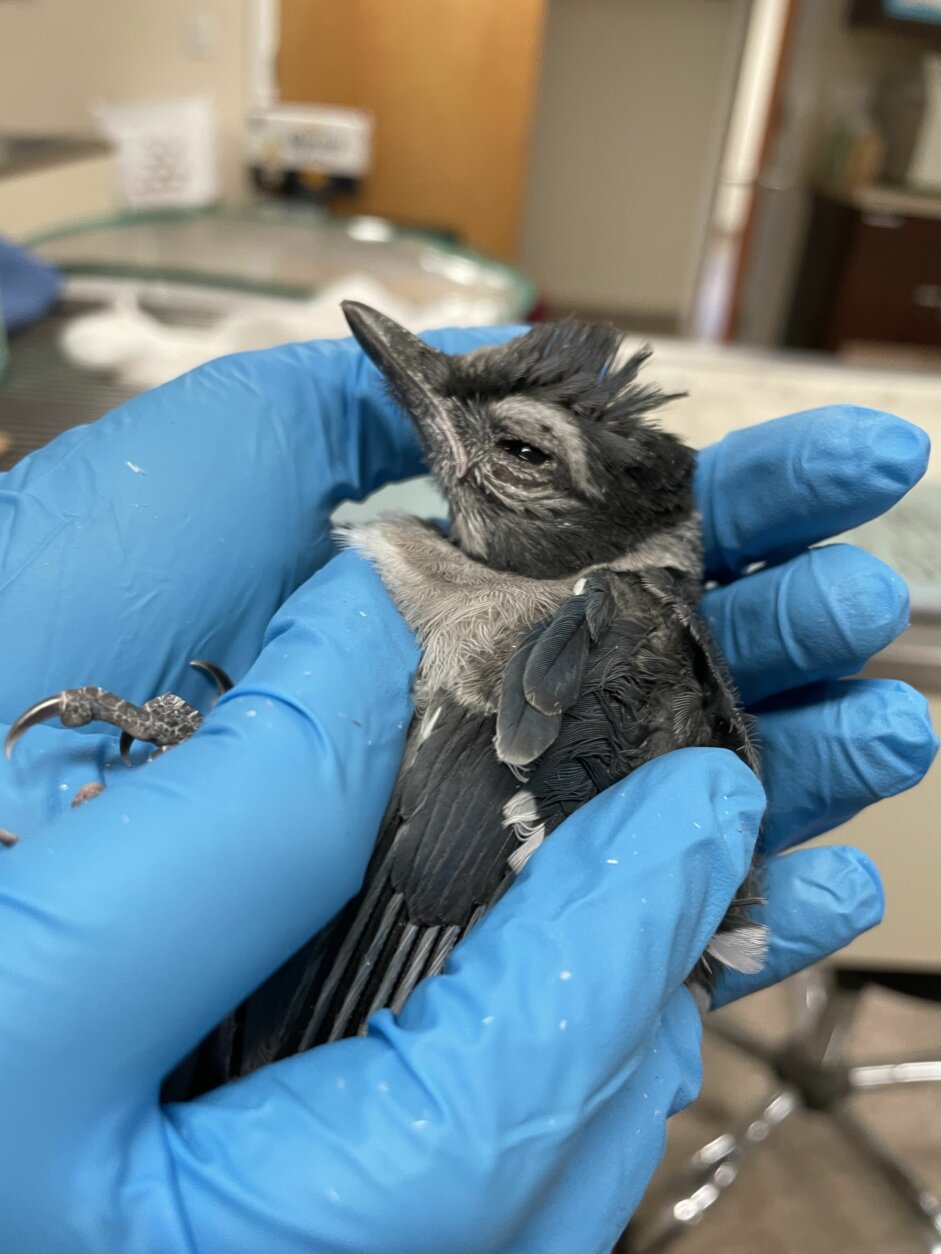
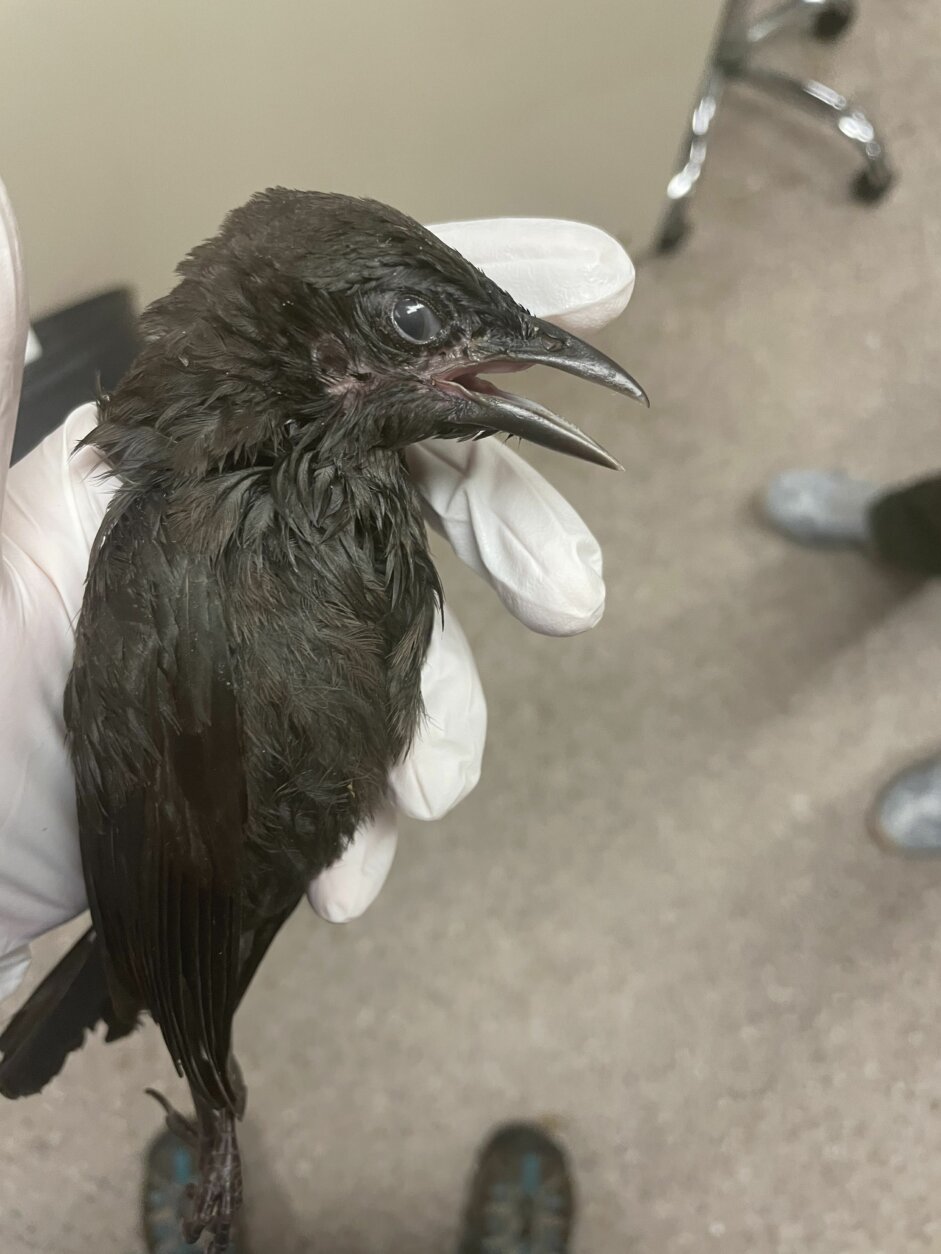
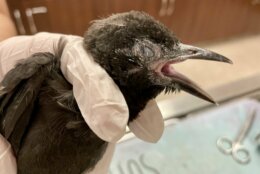
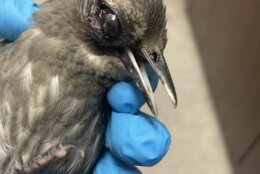
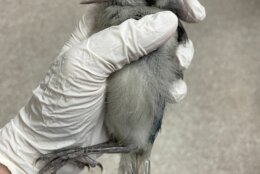
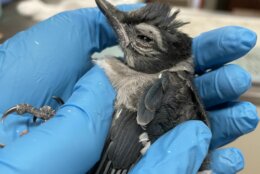
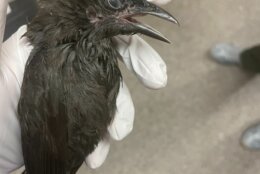
They’ve been found on sidewalks and in backyards with eyes crusted over and unable to maintain their balance.
Wild birds in D.C., Maryland and Virginia have been brought into animal shelters and wildlife rehabilitation facilities for weeks. The sick and dying birds keep coming, but the answers are in short supply.
Paula Goldberg, a licensed wildlife rehabilitator who sits on the board of City Wildlife in the District and volunteers with Second Chance Wildlife Center in Gaithersburg, Maryland, said the illness is perplexing.
The crusted-over eyes look similar to Mycoplasmal conjunctivitis, a disease found when birds eat from birdfeeders that aren’t cleaned regularly. But the neurological symptoms set this illness apart, said Goldberg.
The birds being found now are “bobbing their heads in an unusual way, and are not able to gain their balance,” Goldberg said. They aren’t responding well to treatment, often declining rapidly in care and dying.
Dr. Jen Riley, director of veterinary services at the Blue Ridge Wildlife Center in Boyce, Virginia, said the scale of the problem is concerning. “We’ve had cases from West Virginia. Other people have reported it in Ohio and Maine,” she said.
The illness has been spotted mostly among Blue Jays, Grackles and European Starlings, but Jim Monsma at City Wildlife said the most recent cases there include Robins, Mockingbirds and at least one type of wren.
Riley said her organization also had a Barred Owl who showed similar symptoms.
She also said the state wildlife veterinarian from Virginia has sent samples to the Southeastern Wildlife Cooperative Disease Study at the University of Georgia to see if they can determine the cause of the illness.
“They’re looking at different viruses, parasites, bacterial things,” she said, but “to my knowledge, nobody has any good results yet.”
Birds have also been sent to the National Wildlife Health Center at the United States Geological Survey for necropsies, the examination of animals after death.
Because they don’t know what’s causing the symptoms in the birds, and whether it’s an illness that could spread to humans, Riley is advising anyone who brings a bird to wildlife rehabilitators to wear gloves and a mask, and urges them to dispose of the container that they use to transport the bird.
“I would just tell people to keep an eye out for it, and to report it to their statewide wildlife agencies if they see it,” said Riley. “It’s something that could be spreading quickly and widely, so I hope that people in other areas are also looking out for it.”
More information and assistance can be provided at City Wildlife in the District, Blue Ridge Wildlife Center in Virginia and Second Chance Wildlife Center in Maryland.



